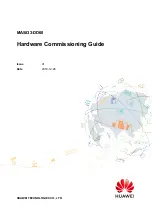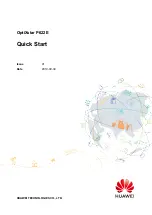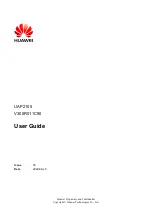
DAP-600P
Wireless AC2600 Wave 2 MU-MIMO Dual Band
PoE Access Point / Router
User Manual
Overview
Wireless Module Parameters
Standards
·
IEEE 802.11a/n/ac
·
IEEE 802.11b/g/n
Frequency range
The frequency range depends upon the
radio frequency regulations applied in your
country
·
2400 ~ 2483.5MHz
·
5150 ~ 5350MHz
·
5650 ~ 5850MHz
Wireless connection security
·
WEP
·
WPA/WPA2 (Personal/Enterprise)
·
МАС filter
·
WPS (PBC/PIN)
Advanced functions
·
Super Mesh function
·
“Client” function (access point mode)
Wireless network client
Wireless network repeater
·
“Client” function (router mode)
WISP repeater
·
WMM (Wi-Fi QoS)
·
Information on connected Wi-Fi clients
·
Advanced settings
·
Smart adjustment of Wi-Fi clients
·
Guest Wi-Fi / support of MBSSID
·
Limitation of wireless network rate
·
Periodic scan of channels, automatic switch to least loaded channel
·
Support of 802.11ac (5GHz) and 802.11n (2.4GHz) TX Beamforming
·
Wider bandwidth (up to 160MHz)
·
Autonegotiation of channel bandwidth in accordance with environment
conditions (20/40 Coexistence)
·
Support of STBC
Wireless connection rate
·
IEEE 802.11a: 6, 9, 12, 18, 24, 36, 48, and 54Mbps
·
IEEE 802.11b: 1, 2, 5.5, and 11Mbps
·
IEEE 802.11g: 6, 9, 12, 18, 24, 36, 48, and 54Mbps
·
IEEE 802.11n (2.4GHz): 6.5–600Mbps (MCS0–MCS30) to 800Mbps (QAM256)
·
IEEE 802.11n (5GHz): from 6.5 to 600Mbps (from MCS0 to MCS30)
·
IEEE 802.11ac (5GHz): from 6.5 to 1733Mbps (from MCS0 to MSC9)
1 Maximum wireless signal rate is derived from IEEE standard 802.11ac and 802.11n specifications. In order to get
the rate of 800Mbps in the 2.4GHz band, a Wi-Fi client should support MIMO 4x4 and QAM256 modulation
scheme. Actual data throughput will vary. Network conditions and environmental factors, including volume of
network traffic, building materials and construction, and network overhead, lower actual data throughput rate.
Environmental factors will adversely affect wireless signal range.
Page
10
of 235











































